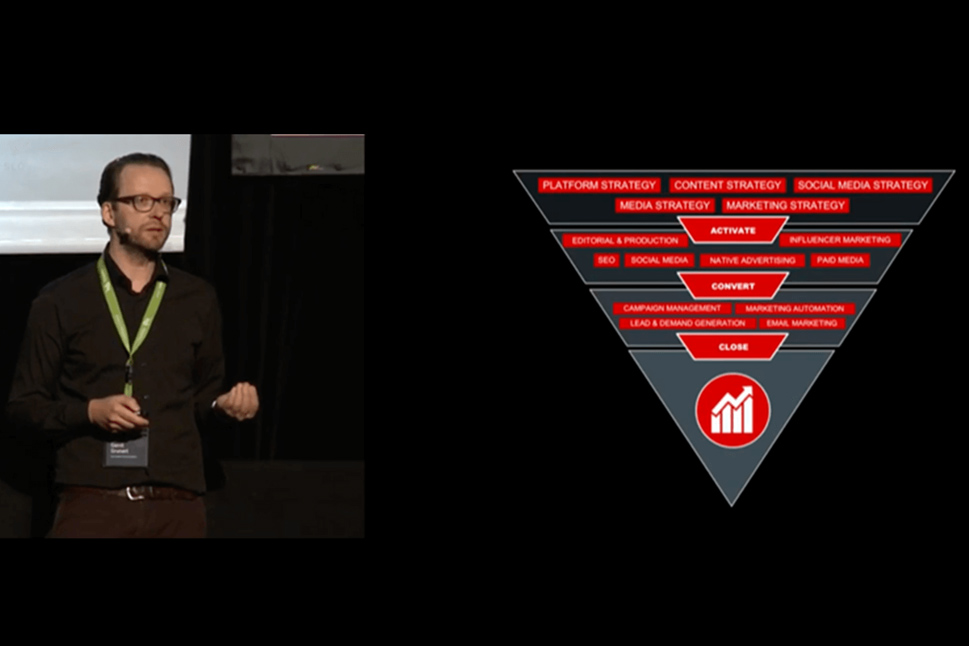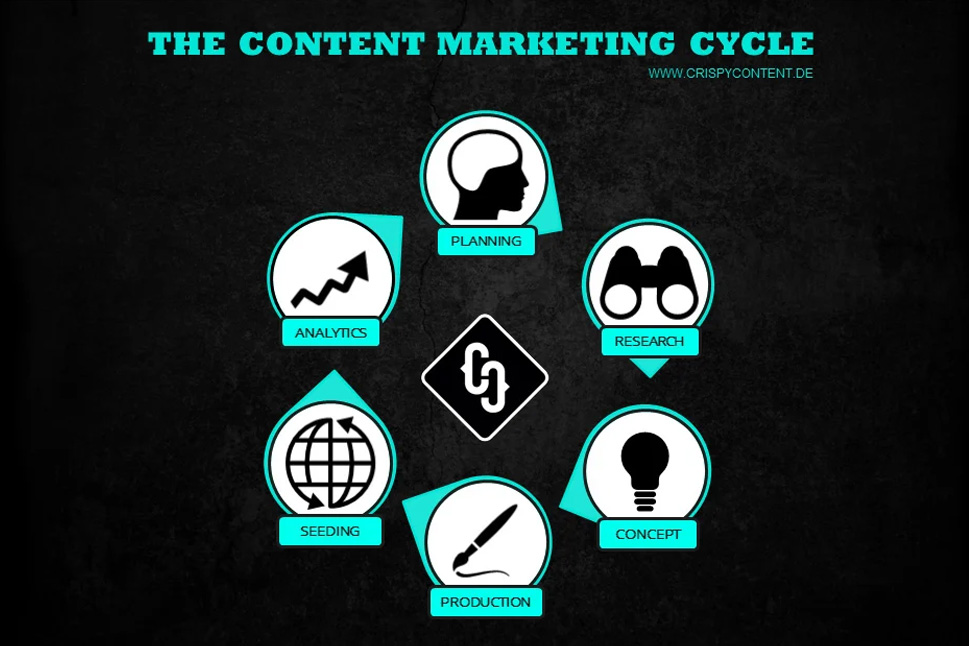Off-page analysis: Quality & quantity keywords
Last updated on April 21, 2022 at 20:42 PM.The off-page analysis is the foundation of any SEO strategy. We’ll show you which data is important for your keyword strategy, how you get this data and how you can benefit from your competitors’ success.

High quality, expensive content is not worth much if nobody knows that it exists. Your SEO strategy should help you to incorporate this aspect into your content production. But how do you know if your strategy is efficient and effective in generating clicks for you? This is where the off-page analysis comes in.
What are on-page and off-page analyses?
Let’s start with a brief look at the on-page analysis: It’s based on the data collected by your web analysis tool, e.g. Google Analytics or Adobe Marketing Cloud. This data provides information about the behaviour of your website visitors:
- What do they click on?
- How long do they take to read your articles?
- At which point do they leave your page?
- ... and many other things.
You’re the only person who has access to this information.
The off-page analysis, on the other hand, is based on information that is available externally:
- How is a website conceived externally, e.g. by Google’s WebCrawler?
- Through which keywords can your website be found?
- Which of your keywords is entered most frequently as a search term?
- ...etc.
Knowing these things allows you to optimise your content for increased search engine visibility. The advantage of off-page analysis is that the data is based on information which is openly available. This means that you can see the strategies your competitors and strongest rivals have adopted. And that allows you to see the opportunities and niches of search engine optimisation and utilise them to your advantage.
Keywords & SEO
Enough theory! We figured that every one of us will be looking for children’s shoes at some point in our lives. So we took three children’s shoe labels at random - Ricosta, Lurchi and Bisgaard - to explain the most important off-page data and what you can learn from them.
1. Search engine visibility
Off-page analysis tools provide an overview of the general visibility in a particular search engine - in this case, google.de. This way, you’ll get an idea of how easy it is to find your website. Search engine visibility depends on many factors, including the number of keywords, their position and the number of detectable pages.
 Figure 1: Visibility index in the analysis tool Xovi
Figure 1: Visibility index in the analysis tool Xovi
This is a rather quantitative statement. A high value may be the result of a provider owning a large number of pages with a large number of keywords, each of which only ranks on the ninth or tenth page of Google’s search engine results. It’s better to have fewer pages with a few very good keywords in the top positions.
2. Number and distribution of ranked keywords
If you dig a little deeper in your off-page analysis, you’ll discover the quality of a SEO strategy. Figure 2 shows the number of keywords that the pages of the children’s shoe labels rank. Bisgaard’s pages only make it into the Top 100 for 14 keywords - half of which are keyword groups that include their brand name. In contrast, Lurchi makes the rankings with 157 of its keywords.
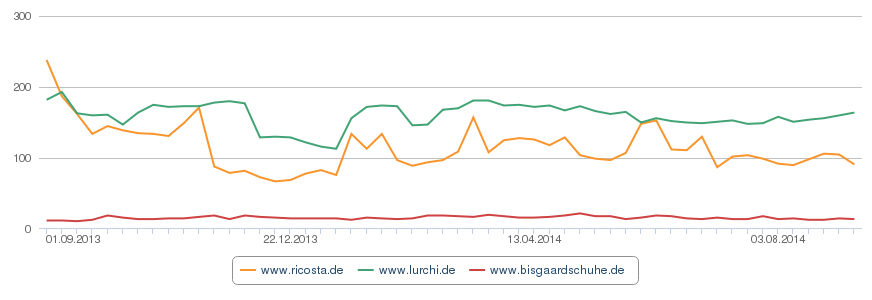 Figure 2: Xovi’s graph shows the number of existing keywords within the Top 100 search result hits of the search engine
Figure 2: Xovi’s graph shows the number of existing keywords within the Top 100 search result hits of the search engine
The third graph looks similar to the second, but it shows the number of pages and sub-pages that show up in the Top 100.
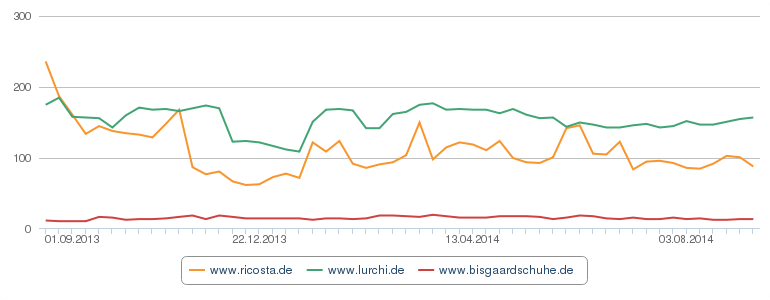 Figure 3: Number of ranked URIs of a website in Xovi
Figure 3: Number of ranked URIs of a website in Xovi
The number of ranked keywords only makes sense if you know the position in which they are ranked. Figure 4 shows where the shoe label’s detectable pages are listed. Despite the low number of pages and keywords, 5 of Bisgaard’s pages are on the first page of search results. Ricosta and Lurchi are also mainly placed on the first Google page.
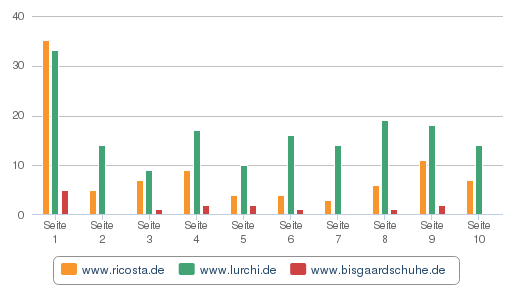 Figure 4: Position of the ranked pages.
Figure 4: Position of the ranked pages.
3. Local search volume of the keywords
But the keyword off-page analysis is not finished yet. A placement on the first page of google.de is not a guarantee of success. Firstly, you’ll need to check if people are actually searching for this keyword or keyword group. If ten people search for your apparently perfect keyword each month, this figure doesn’t amount to much. Nevertheless, you shouldn’t be put off by a low volume of search queries altogether. Several long tail keywords with 100 search queries a month will accumulate and provide you with the same level of success in the medium-term as one strongly contested keyword.
You should also check if all your ranked keywords are right for you. When the user gets to the linked page, does he find what he’s looking for? Apart from search engine optimisation, your potential customer’s satisfaction should be paramount. Otherwise, your top position is in vain.
Lurchi’s analysis shows an exemplary mixture of niche keywords and content marketing. It ranks 8th with the search query “How fast do children’s feet grow?” That question is asked 170 times a month. Granted, that’s not a huge number. Yet, in combination with several other suitable articles about shoe sizes and children’s feet, it offers a perfect opportunity to drive traffic to the shoe label’s page via alternative search queries.
Keywords Summary
So, what do you get out of an off-page analysis of your keywords?
- Analysis of your search engine visibility
- Measurement of the success of your current keyword strategy through identification of the distribution and number of your ranked keywords
- Fresh ideas for your SEO and keyword strategy, including from observation of your competitors’ approaches
- User oriented optimisation of your strategy, e.g. through search volume
- Increased awareness of the opportunities of niche keywords
 Gerrit Grunert
Gerrit Grunert
Gerrit Grunert is the founder and CEO of Crispy Content®. In 2019, he published his book "Methodical Content Marketing" published by Springer Gabler, as well as the series of online courses "Making Content." In his free time, Gerrit is a passionate guitar collector, likes reading books by Stefan Zweig, and listening to music from the day before yesterday.































































